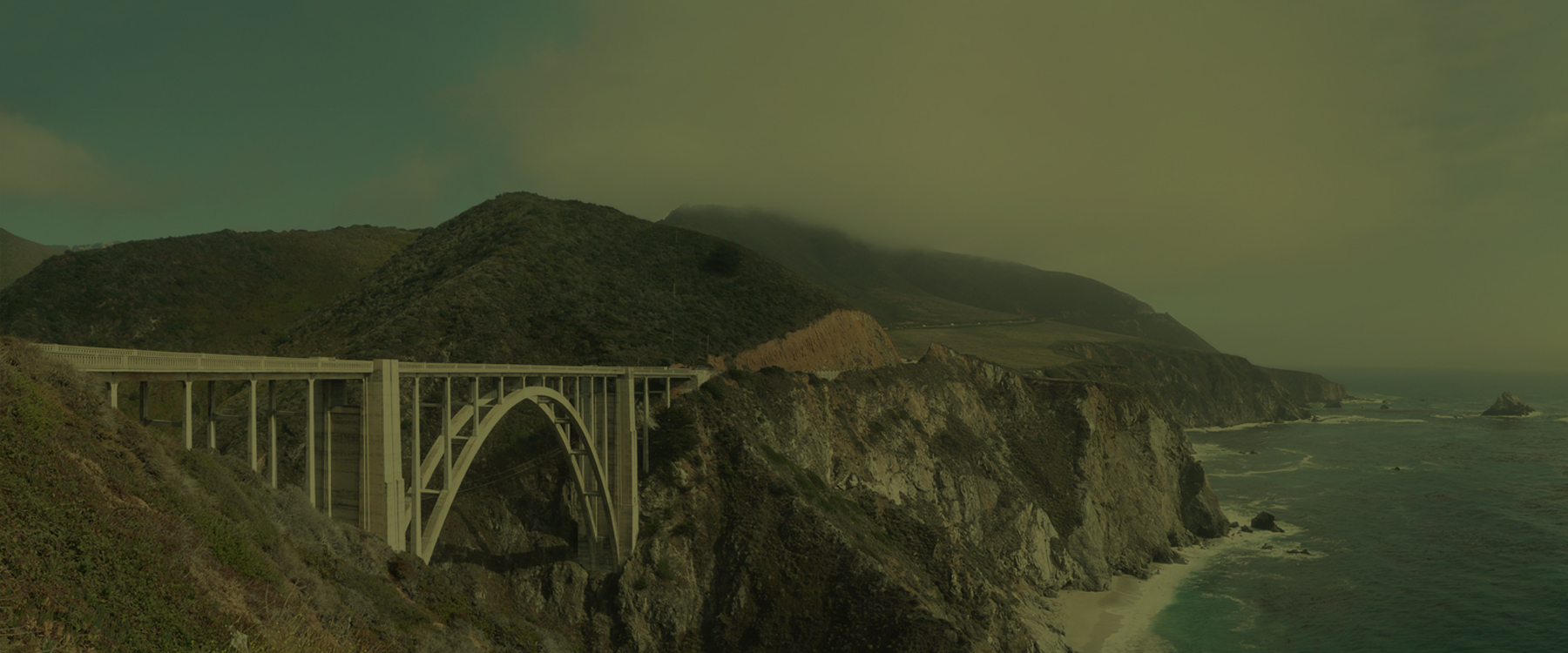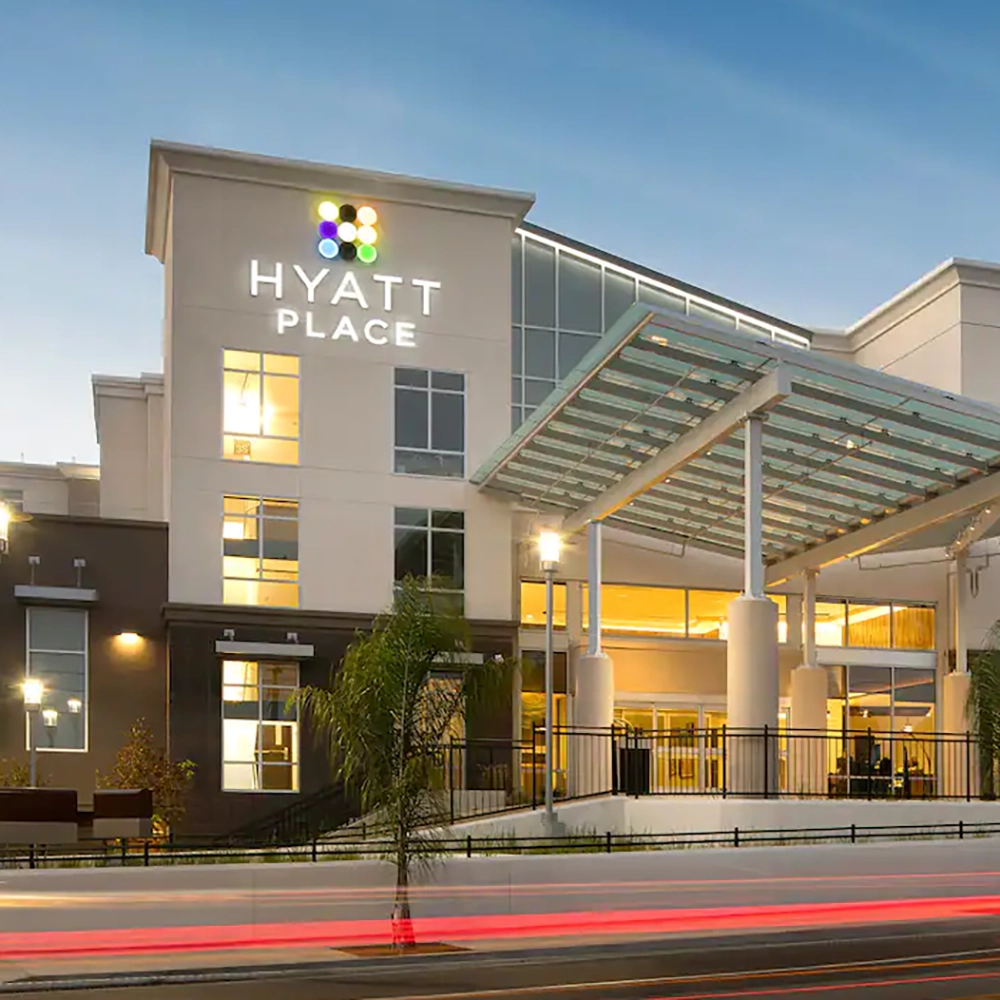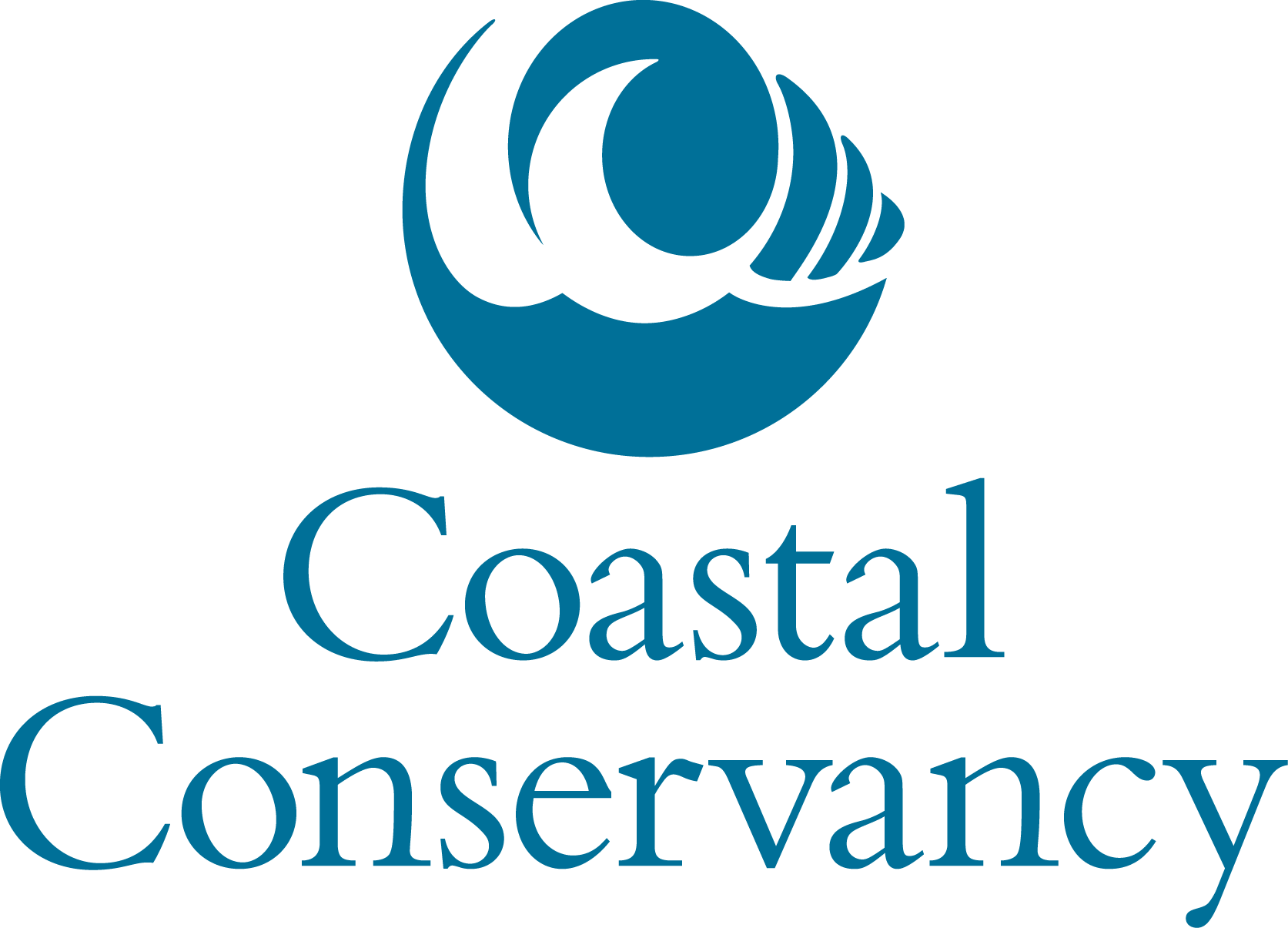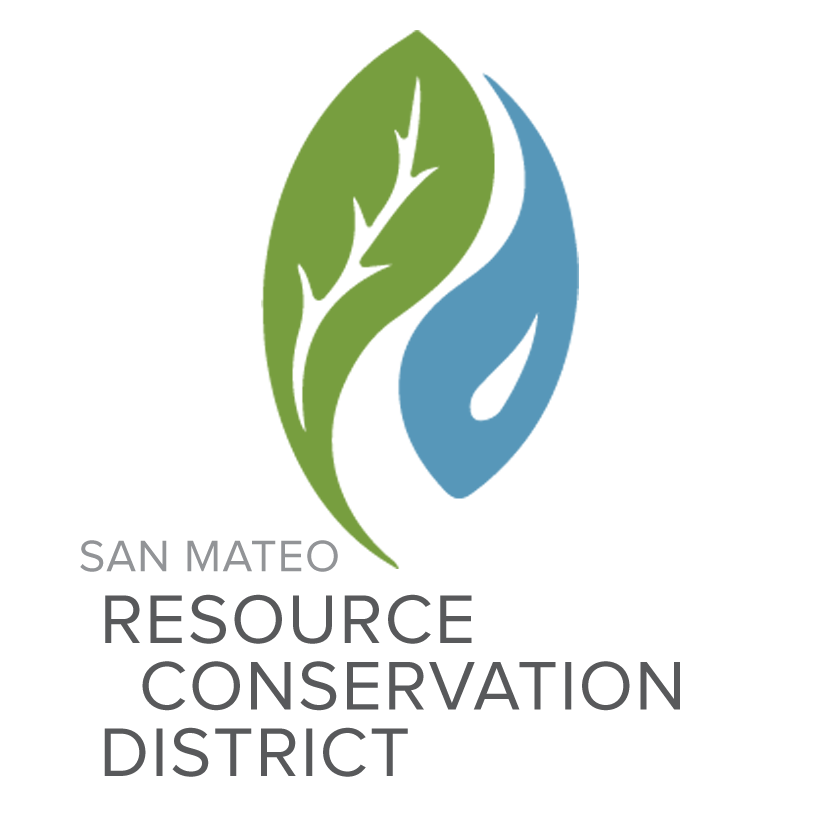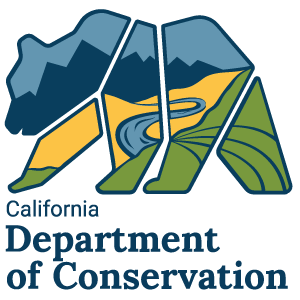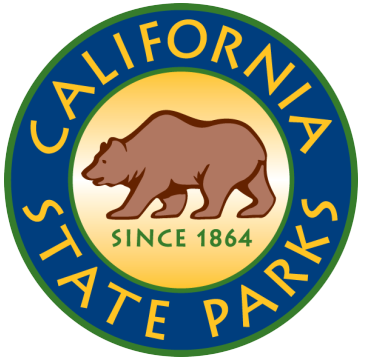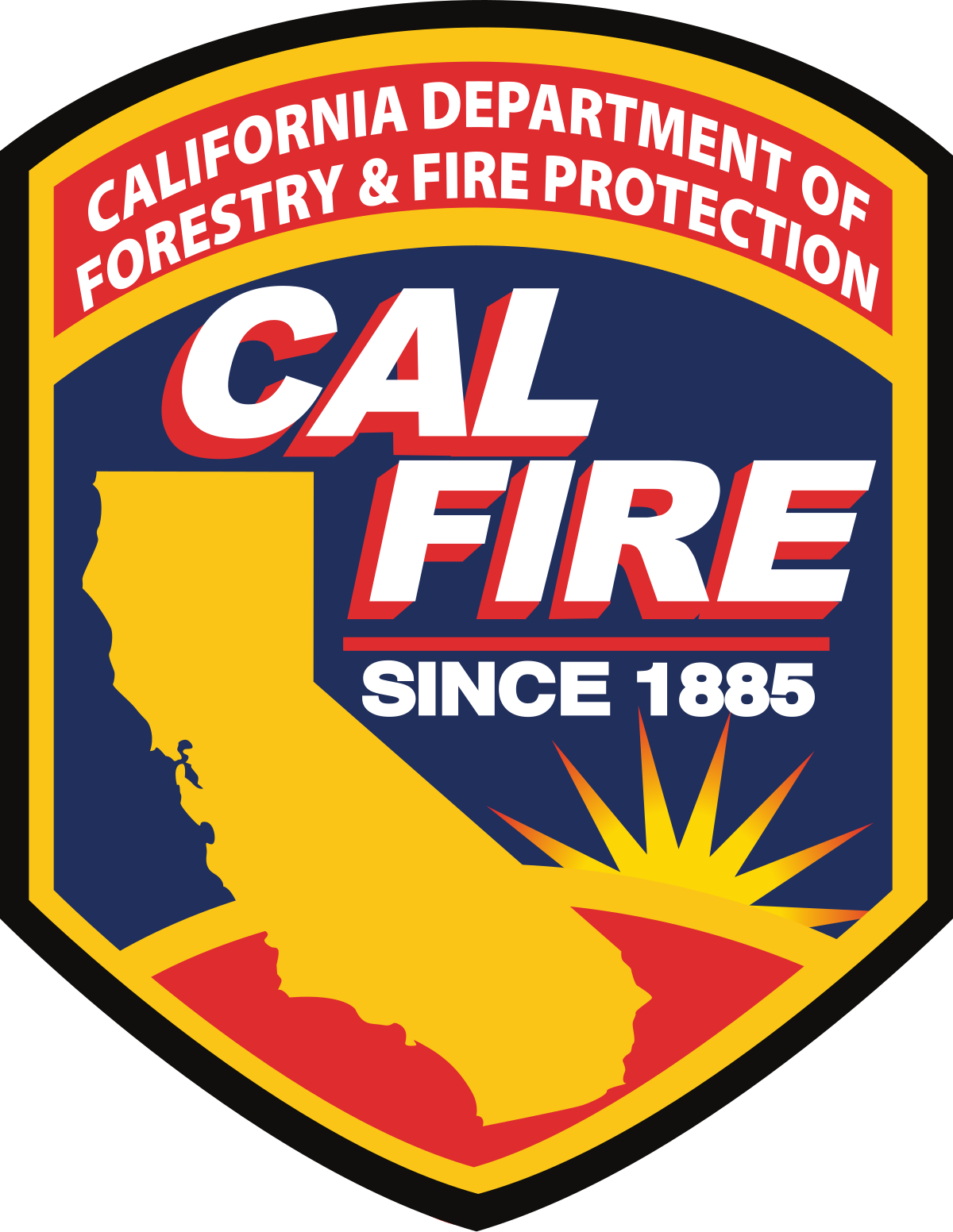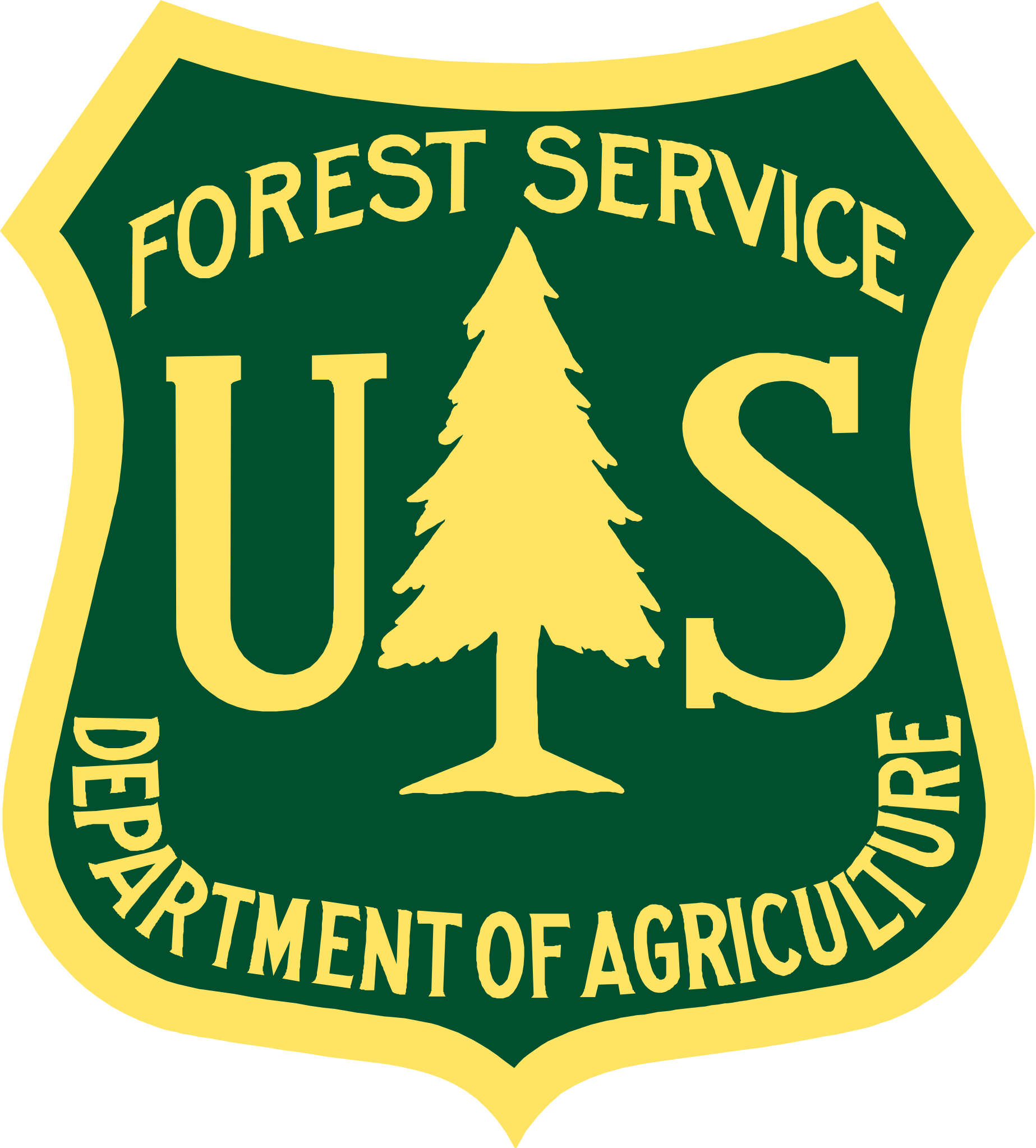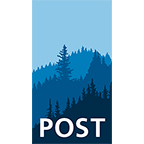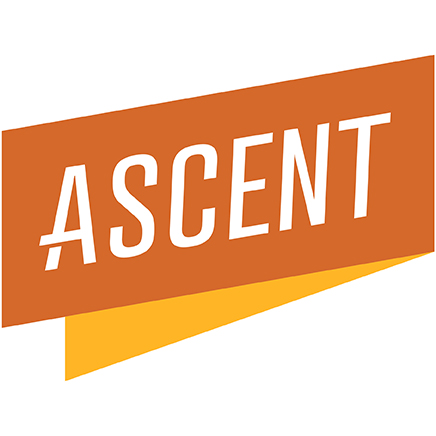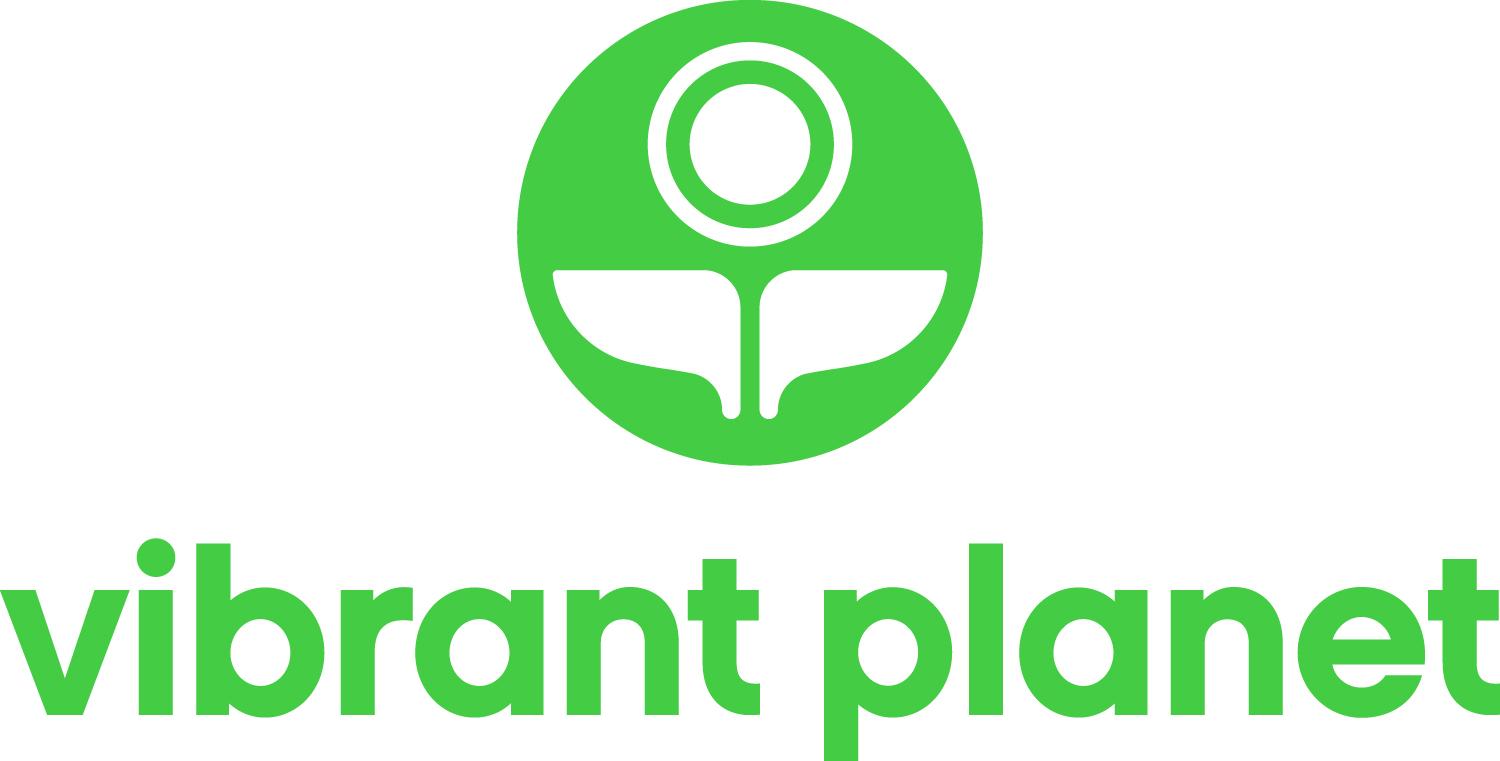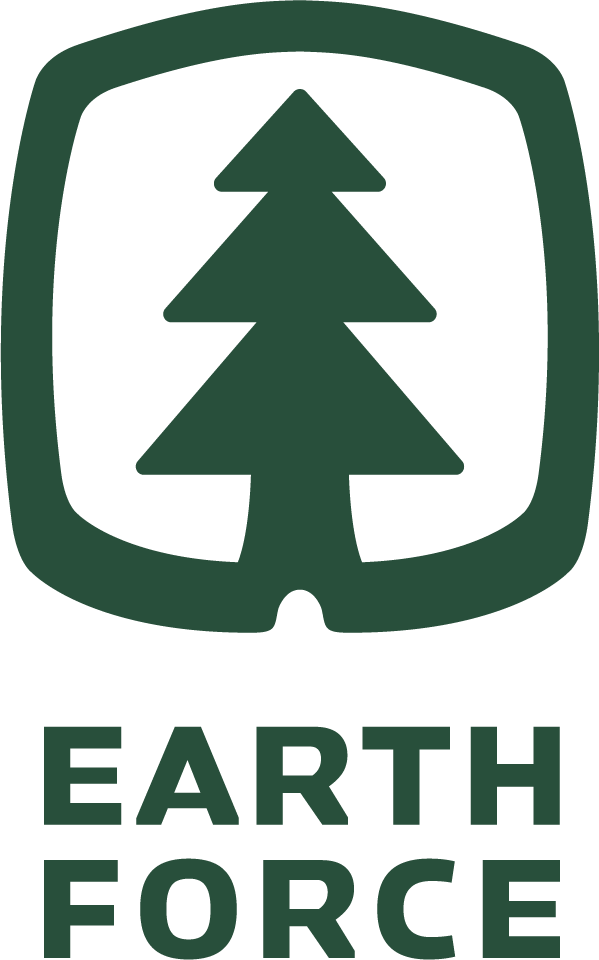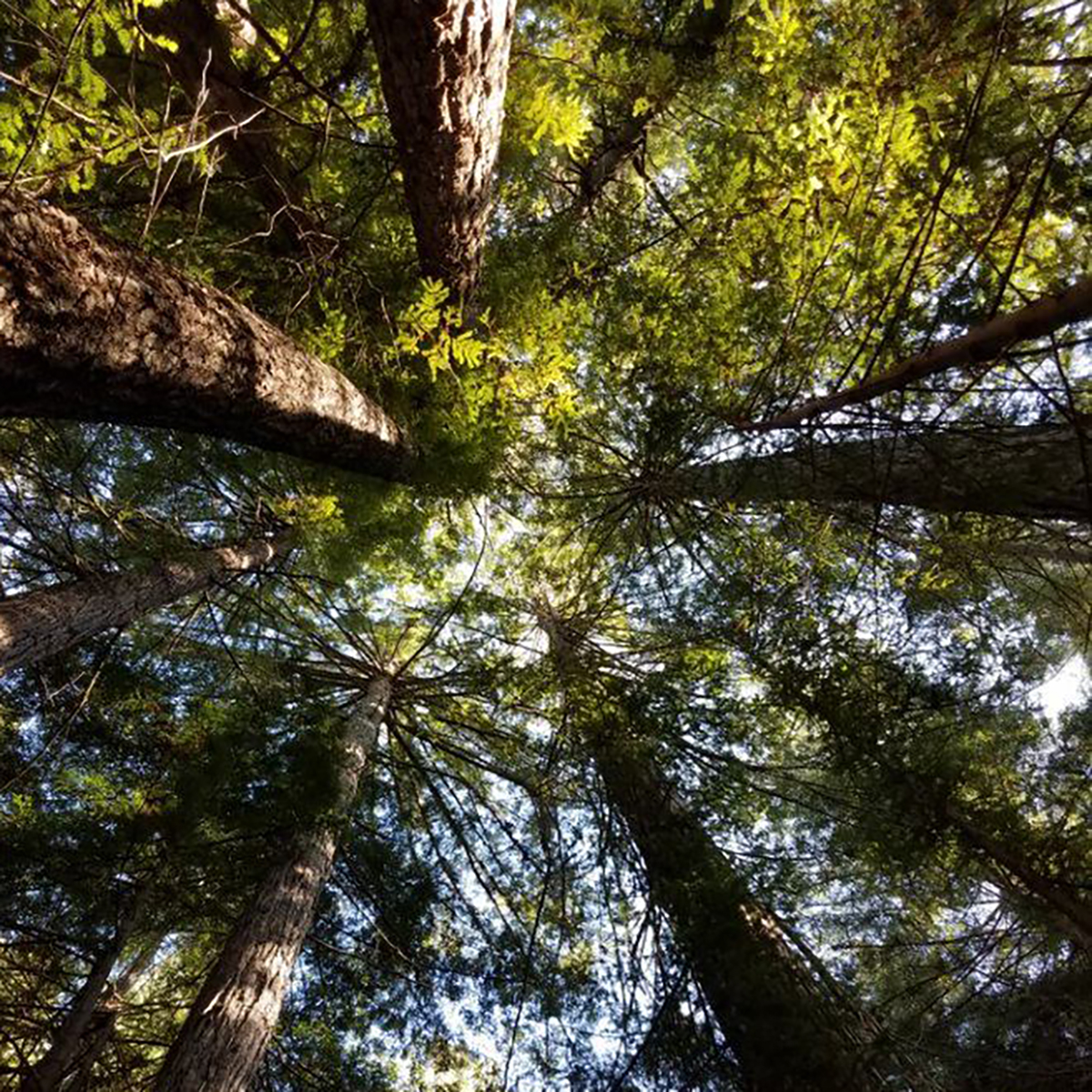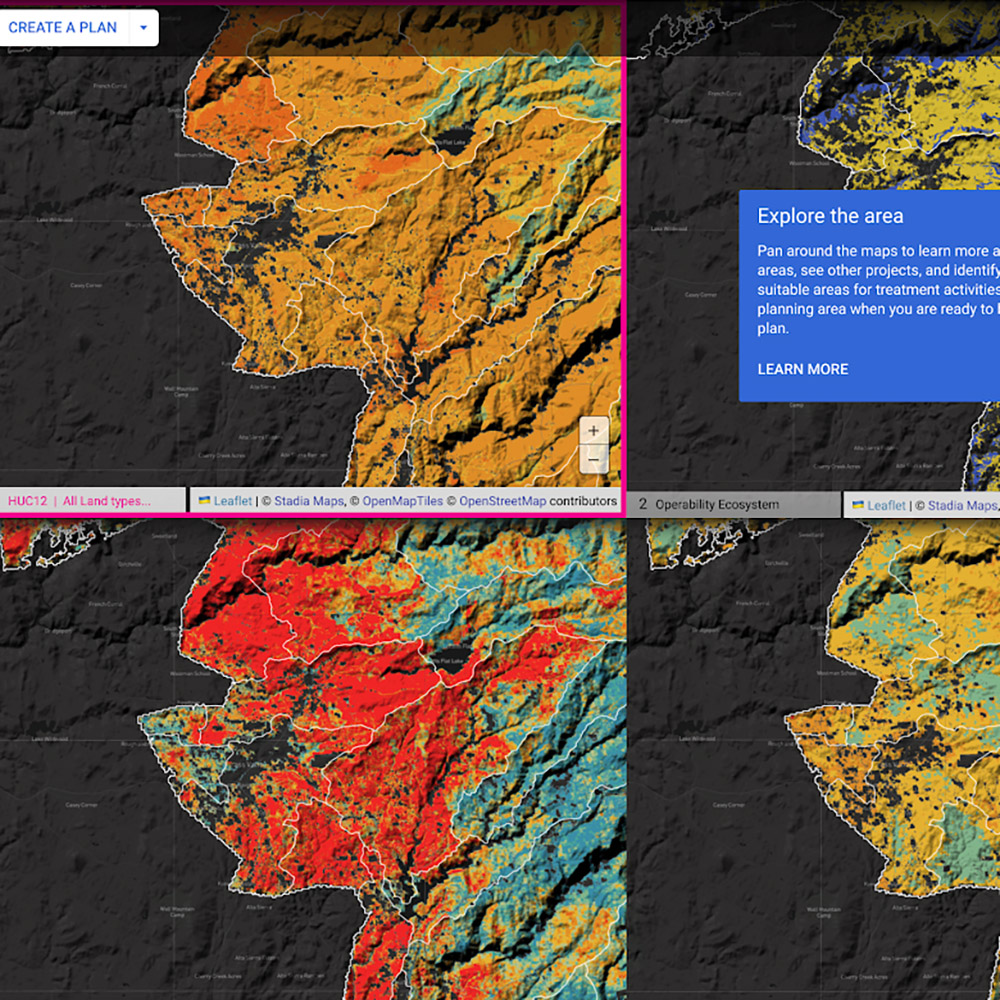Central Coast Regional Meeting
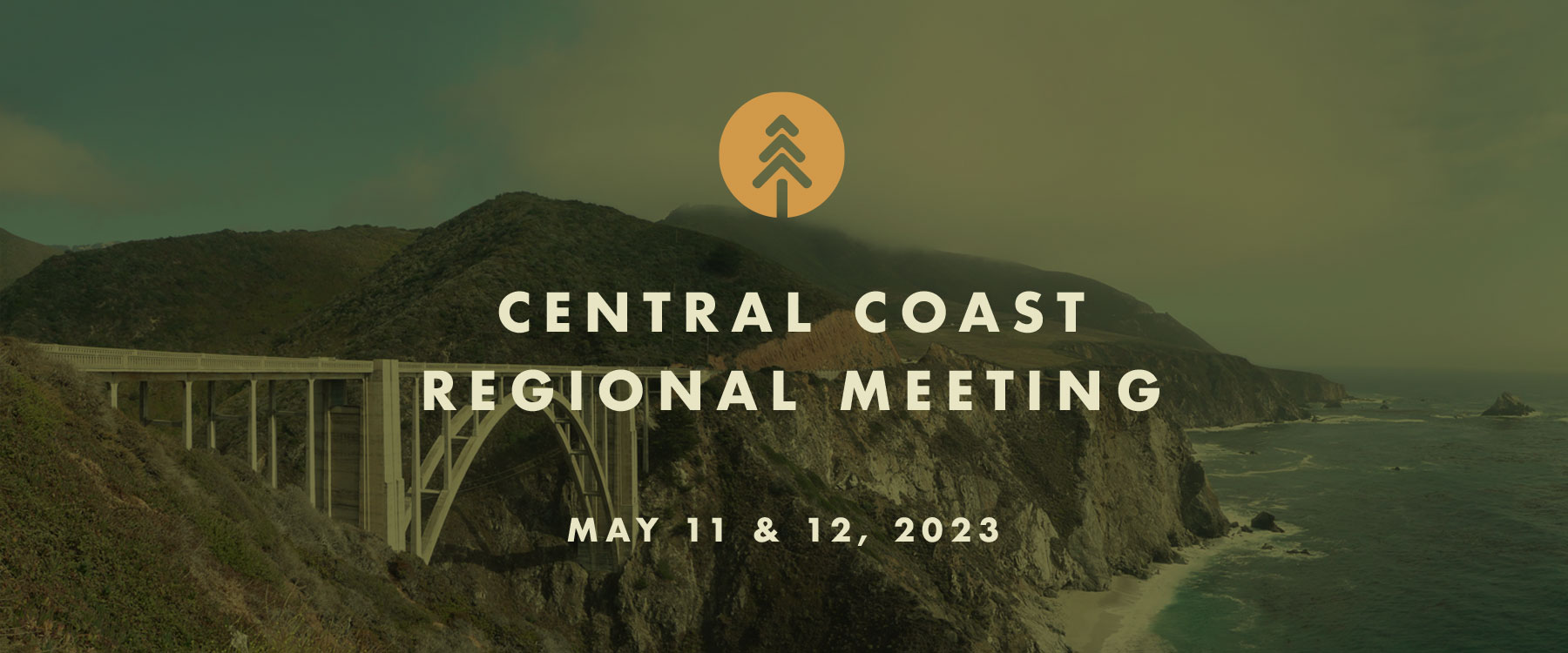
Registration for in-person attendance is now closed.
Central Coast Regional Meeting
Join us in person at The Cocoanut Grove on the Santa Cruz Beach Boardwalk or remotely via Zoom. Hosted by the California State Coastal Conservancy and San Mateo Resource Conservation District, discussions will focus on the unique landscapes and land management issues of California’s Central Coast. The meeting will open with a Resource Fair to showcase local organizations at work in the Central Coast region. Field tours will be offered on May 12. We look forward to connecting, committing to action, and collaborating on real solutions to the daunting challenges facing our landscapes and communities.
MAY 11 & 12
The Cocoanut Grove
Santa Cruz Beach Boardwalk
400 Beach Street
Santa Cruz, CA
Event schedule - May 11
8:30-10:00 a.m. Resource Fair
10 a.m.-12:15 p.m. Morning Session
12:15-1:30 p.m. Lunch
1:30-4:30 p.m. Afternoon Session
4:30-6:00 p.m. Reception

Free parking available in the main parking lot. Keep your ticket for validation.
field tours
FIELD TOURS WILL BE OFFERED ON MAY 12th
San Vicente Redwoods: Demonstrating Compatibility of Forest Resiliency and Public Access
Destination: San Vicente Redwoods, a privately held property demonstrating the compatibility of forest resiliency, conservation, sustainable timber harvest, and public access. This unique property is managed by a collective of four land trusts: Peninsula Open Space Trust, Sempervirens Fund, Save the Redwoods League, and the Land Trust of Santa Cruz County. All of this nearly 9,000-acre site burned in the 2020 CZU Lightning Complex Fire. On this field trip, we’ll see the efficacy of a prescribed burn conducted just months before the 2020 wildfire and we’ll visit a temporary biomass processing site and discuss the opportunities and challenges of processing forest residue onsite. Pending weather and site conditions, we hope to demonstrate the use of air curtain burners, a carbonator, and a pile burn side by side. After the 9 am – 11 am tour, stay for a networking lunch hour (cold drinks and light snacks provided) with attendees of the Together Bay Area Conference Field trip participants are encouraged to also attend the subsequent 12-2 p.m. field trip with Together Bay Area.
Start/End Time: 9am – 11pm (with option to 2pm)
Location: VIEW MAP >
Accessibility: Small section that meets outdoor accessibility guidelines, majority of tour along moderate difficulty trails.
Fall Creek Truck Trail Forest Health Project: Ladder Fuels Reduction Promotes Biodiversity and Resilience
Destination: Fall Creek Unit of Henry Cowell State Park, the focus of a 62-acre CAL FIRE Forest Health project. This primarily second-growth redwood and mixed conifer forest was nearly all burned at low to moderate severity during the 2020 CZU Fire and was used heavily by fire personnel during the event. The Forest Health project includes removal of dense ladder fuels and dead trees with the goal of lowering stand density and promoting greater biodiversity and resilience. This project showcases a great partnership between the RCD of Santa Cruz County, California State Parks and CAL FIRE.
Start/End Time: 2pm – 4:30pm
Location: VIEW MAP > Meet at Trininty Bible parking lot at the bottom of El Solyo Heights Road in Felton (7301 Hwy 9, Felton, CA 95018)
Accessibility: No ADA access or restrooms. Personal protective equipment may be required.
Quarry Park Fuel Reduction/Community Protection: Community Engagement and Protection in the WUI
Destination: Quarry Park, just north of Half Moon Bay, is a focal point of significant community interest regarding management of fuel loads, particularly eucalyptus, in the Wildland Urban Interface. Learn how San Mateo Resource Conservation District and partners, including county parks and local fire agencies, brought fire science and deep listening to community engagement. We will tour a shaded fuel break project on site while discussing how projects are informed by fire modeling and permit strategies, and how biomass management and winter storm response affect their implementation.
Start/End Time: 10am – 12pm
Location: VIEW MAP >
Accessibility: Walking tour. Personal protective equipment may be required. Limited parking, please carpool.
Forest Health Work in the Butano Watershed: Envisioning Forest Health as a Process, Not a Project, in the Pescadero-Butano Watershed
Destination: The State’s first completed California Vegetation Treatment Program (CalVTP) project, also the first project approved by the California Coastal Commission to use a Public Works Plan as a novel approach to permitting in the Coastal Zone. We will visit two sites in southern San Mateo County impacted by the August 2020 CZU Lightning Complex Fires: Butano State Park and Girl Scouts of Northern California’s Camp Butano. Over 2,100 acres will be treated to improve the health and resilience of the forest. Discussion will include recovery from fire, prescribed burns and fuels treatments, and permitting for long-term management.
Start/End Time: 10am – 2pm
Location: VIEW MAP >
Accessibility: Two vehicle stops with short walking tour from each.
Big Basin State Park Post-Fire Recovery: Reimagining Big Basin
Destination: The headquarters area of Big Basin State Park. The tour will highlight the recovery efforts that have been made to reopen the park following the CZU Lightning Complex incident. We will also be discussing the “Reimagining Big Basin” process that seeks to create a more equitable and resilient park. The tour will include a short walk-through old growth redwood forest that experienced high severity fire and give participants an opportunity to discuss State Park’s development of a forest management strategy for Big Basin and its neighboring parks.
Start/End Time: 9am – 12pm
Location: VIEW MAP >
Accessibility: Short walk through old growth redwood on accessible path.
Marin Wildfire Prevention Authority: Efforts of the Only Publicly Funded Wildfire Prevention Authority in the U.S.
Destination: Showcased projects of the Marin Wildfire Prevention Authority (MWPA), the only publicly funded wildfire prevention authority in the U.S. The tour will highlight local collaborative programs led by MWPA including vegetation management, a countywide chipper program, defensible space evaluations/creation, evacuation planning, and route clearing. We will discuss the MWPA’s use of and reliance and the CalVTP and MWPA’s support of the recently launched Fire Foundry Program, an innovative workforce development program aimed at achieving equity in the fire and civic service and providing pathways to sustainable wage careers. Participants will meet at the MWPA office in San Rafael, the MWPA will provide vans to shuttle participants to each tour site.
Start/End Time: 11am – 3pm
Location: VIEW MAP >
MWPA Office: 1600 Los Gamos Drive, Suite 345, San Rafael
Accessibility: Some walking on uneven unpaved paths/trails; parts are fully accessible. Driving tour to sites with short walks at each.
Webster Project – San Luis Obispo County: a CAL FIRE Governor’s Priority Project
Destination: “The Webster Project” – one of CAL FIRE’s 2019 Governor’s priority projects – covering 1,200 acres of chapparal habitat in rural north county San Luis Obispo. The goal of this project was to reduce hazard fuel loading and mimic natural fire using prescribed fire. The tour will highlight the treatment of crushing chamise brush followed with prescribed fire to consume 10-hour dead fuels. Treatments are aimed at creating a diversity of resilient vegetation types while creating a safety zone and anchor point for firefighting efforts in the event of a wildfire.
Start/End Time: 1pm – 3pm
Location: VIEW MAP >
Accessibility: Will Meet at CAL FIRE Creston Fire Station, load into van, drive to project site- 15 minutes. Mostly driving tour with small walk out to burn units (100 feet from vehicle), No ADA.
Santa Lucia Conservancy: Balancing the Protection of Life, Property, and Biodiversity with Long-term Ecosystem Resilience
Destination: The Santa Lucia Preserve. The Santa Lucia Conservancy’s vision for fire and fuels management on The Preserve is one that harmoniously balances the protection of life, property, and biodiversity with long-term ecosystem resilience. This strategy includes shaded fuel breaks, prescribed burns, conservation grazing, invasive plant removal, a Preserve-wide fuel management plan, and lot-specific fuel management plans for individual homeowners. Join the Santa Lucia Conservancy and collaborating partners for a driving tour of The Preserve to learn more about how we collaborate with fire agencies, land management organizations, landowners, and our neighbors to implement these fire safety tools.
Start/End Time: 9am – 12:30pm
Location: VIEW MAP >
Accessibility: This is a driving tour.
Swanton Pacific Ranch and Big Creek Lumber Sawmill: Witnessing and Learning From the Effects of the 2020 CZU Lightning Complex
Destination: Cal Poly’s Swanton Pacific Ranch. The tour will focus on post fire redwood and Douglas fir forest management and restoration funded by CAL FIRE Forest Health program and guided by the property’s long term Non-Industrial Timber Management Plan. In August 2020, the CZU Lightning Complex Fire impacted Cal Poly’s School Forest, which has long been a hub of student learning, research, and demonstration of sustainable timber management practices. The fire, along with CAL FIRE’s funding support, has presented us with some unique opportunities to demonstrate fuels reduction and restoration and ways to experiment with preparing the forest for the predicted consequences of climate change. We are also experimenting with various methods of biomass removal, replanting, and redwood canopy retention while training a workforce on methods to increase the pace and scale of fuels management and vegetation treatment. Break for lunch, and then reconvene down the road for a tour of the Big Creek Lumber Sawmill. We’ll see the mill in operation and discuss the effects of fire on merchantable timber, as well as the effects of the CZU fire on Big Creek property, and the recovery work they are doing post-fire.
Start/End Time: 10am – 2pm
Location: VIEW MAP >
Accessibility: Attendees will meet at a central location and carpool to tour location a short drive away.
Glenwood Open Space Preserve: demonstrating multiple benefits of a conservation grazing program
Destination: Glenwood Open Space Preserve. Join the Land Trust of Santa Cruz County for a tour of this beautiful preserve in Scotts Valley, just a few minutes off of Highway 17 on the way out of Santa Cruz. The Glenwood Open Space Preserve is home to a high number of rare and endangered species, including the Ohlone tiger beetle, Opler’s longhorn moth, and the Scotts Valley spineflower. This tour will show off the beautiful spring wildflowers in bloom and highlight how we manage fuels along the wildland-urban interface while preserving the endangered species through conservation grazing, among other methods.
Start/End Time: 1pm – 3pm
Location: VIEW MAP >
Recommended Accommodations
Central California Regional Meeting Event
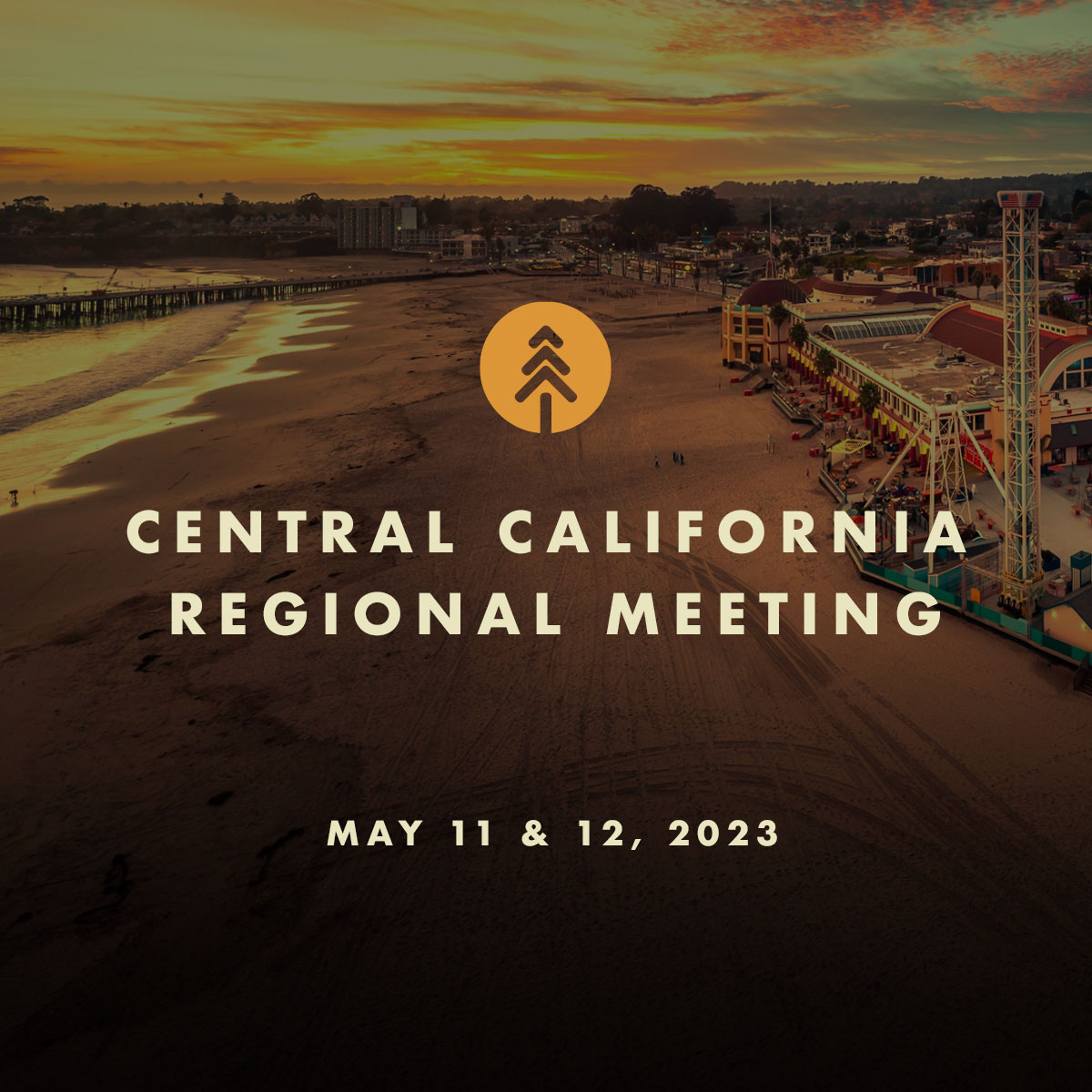
Welcome ToThe Central California
Regional Meeting
Event schedule
8:30 – 10:00 a.m. Resource Fair
10 a.m. – 12:15 p.m. Morning Session
12:15 – 1:30 p.m. Lunch
1:30 – 3:15 p.m. Afternoon Session
3:30 – 4:30 p.m. Small Group Discussion
4:30 – 6:00 p.m. Reception
agenda
8:30 AM Resource Fair & Check-In
10:00 AM 1. Welcome
10:30 AM 2. Opening Remarks
10:50 AM 3. Director’s Report
• Central Coast Accomplishments & Updates
11:05 AM 4. The Central Coast MosaicRegional Resource Kits
12:30 PM Lunch – Resource Fair Open
1:30 P.M 5. From Local Collaboration to Regional Action
• Organizing for Impact and Adapting to Changing Conditions
• Navigating Complex Regulatory Requirements
2:50 PM Group Activity
3:05 PM 6. Moving Towards a Regional Investment Strategy
3:50 PM 7. Keynote Presentation
• Senator John Laird, CA 17th District
4:15 PM Closing Remarks
4:30 PM Complimentary Reception
Prescribed Fire Monitoring and Reporting
Prescribed Fire Monitoring and Reporting
Department: California Air Resources Board (CARB)
Program Description: Successfully increasing prescribed fire must be supported with effective planning, smoke monitoring and reporting to assess health and climate impacts, as well as public education and outreach to secure awareness and support. Funding is included for the California Air Resources Board and local air districts for increased monitoring, permitting, and communication related to prescribed fire.
Program Impact: Air districts statewide have achieved documented increases in prescribed burn smoke monitoring, and in public notification and public education. Smoke monitors are cached at five locations across the state for air district use. The California Smoke Spotter mobile app received several upgrades in 2022 to improve the public burn and smoke notification platform, including more frequent refreshing of burn status and wildfire notifications added to existing information on individual prescribed burns. The State’s voluntary prescribed fire information reporting system (PFIRS) for smoke management is being upgraded in coordination with data system improvements at CAL FIRE and other agencies.
Resilience in Action: In the three years since inception of the CARB prescribed burn reporting and monitoring program, June 2019 to June 2022, the state’s air districts logged 9,449 reported prescribed burns, representing more than 366,000 total acres managed. Burns monitored statewide for air quality impacts totaled 987 over the same period, representing a 60 percent average year-over-year increase in burn monitoring from 2020 to 2022.
Program Website Links:
- California Air Resources Board launches California Smoke Spotter app | California Air Resources Board
- California Air Resources Board releases California Smoke Spotter 2.0 | California Air Resources Board
- Agricultural & Prescribed Burning | California Air Resources Board
- Smoke Management Programs and Burn Decisions – Other Air Districts | California Air Resources Board
Traditional Media Coverage:
- Los Angeles Times, Sept. 2022: Forest Service resumes prescribed fire program, but some fear new rules will delay projects
- Los Angeles Times, Aug. 2022: As forests go up in smoke, so will California’s climate plan
- TimeOut Los Angeles, Aug. 2022: This app can forecast how bad wildfire smoke will be near you
- KRCR-TV (Redding), July 2022: North Coast air quality officials urge residents to prepare for wildfire smoke risks
- Yuba Net, May 2021: Beale Fire Department, Wildland Support Module set to conduct prescribed burn
- San Francisco Chronicle, July 2021: The number of controlled burns is rising in Is it enough?
- ABC 10 in Sacramento, Jun 2021: New app tracks smoke in California
- Pew Charitable Trusts, September 2020: California May Need More Fire to Fix its Wildfire Problem
- North Bay Business Journal, August 2020: Lack of grazing, prescribed burns adds fuel to California’s wildfires, say experts and stakeholders
California Smoke Spotter 2.0 launch (August 2022):
- CARB releases Smoke Spotter 2.0
- #CASmokeSpotter‘s personalized alert settings can help you plan for possible smoke exposure
- The best way to protect yourself from smoke is to plan for it.
Since California Smoke Spotter was first launched in May 2021, and with the addition of wildfire smoke information and forecasting in August 2022, nearly 8,000 users have downloaded the app.
RESOURCES
State Demonstration Forests
State Demonstration Forests
Department: CAL FIRE
Program Description: The California Department of Forestry and Fire Protection (CAL FIRE) operates nine Demonstration State Forests totaling approximately 72,000 acres. The forests represent the most common forest types in the state.
These living laboratories focus on applied research and testing the best forest management practices for carbon sequestration, forest health and fire resilience. Demonstration forests provide answers to some of the most difficult forest management questions that we currently face under a rapidly changing climate, from stand-density to ecological co-benefits to better understanding forest hydrology.
With the ability to conduct decadal-long studies, the demonstration forests inform updates to the forest practice rules governing the 8 million acres of commercial timberlands in California. The forests also provide research and demonstration opportunities for natural resource management, along with recreation opportunities, fish and wildlife habitat, and watershed protection.
Program Impact: In addition to supporting operating costs, this $10 million investment is critical to help modernizing the mission of the demonstration forests. Activities will include:
- A carbon sequestration study
- Prescribed fire research
- Fuel reduction work to enable prescribed fires
- Upgrades to trails and recreational facilities
- Improved community communication programs
- Resources to support tribal co-management
Mountain Home: The 2020 and 2021 fire seasons killed an unprecedented number of monarch giant sequoias in California. However, the grove of old-growth Giant Sequoias at Mountain Home were protected from catastrophic loss during the 2020 Castle Fire due to a decade of active management, including timber harvest, fuel reduction, and prescribed burning. Funding supported removal and burning of post-fire woody debris to prepare approximately 400 acres for reforestation. 212,000 seedlings, including 25,000 giant sequoias were planted in 2022. Another 10,000 giant sequoia seedlings are being grown at the LA Moran Reforestation Center for planting in 2023 to complete post-fire reforestation efforts. Mountain Home Giant Sequoia Grove Post-Castle Fire (2020) statistics:
- 2022 Re-inventoried Giant Sequoia: 4,483
- Mortality: 335 (7.5 percent)
Jackson Demonstration State Forest: Understanding the role forests play in watersheds is crucial, especially during California’s ongoing mega drought. The Jackson Demonstration Forest has been conducting one of the most comprehensive forest hydrology studies in the nation with data going back to 1962. CAL FIRE just executed a 100-year Memorandum of Understanding with the US Forest Service Pacific Southwest Research Station to continue the Caspar Creek Watershed Experiment. The third experimental harvest in this study occurred in 2018. Specific plots were harvested at different densities to track the water yield relative to the forest density. The 2018 harvest is starting to yield preliminary results on the influence of forest stand density reduction on watershed function and yield. This is critical to understanding how forests can help protect watershed and mitigate drought conditions.
Advancing Scientific Understanding of Forests, Fire, and Climate Change: The following scientific studies are being undertaken on Demonstration State Forests to contribute to our knowledge of forests as a nature-based solution to climate change and demonstrate resilient forest landscape conditions to private landowners.
- Adaptive Management Experiment for Coastal Redwoods: Led by Dr. Sarah Bisbing, University of Nevada Reno, this study will develop three foundational silvicultural treatments to prepare forests for disturbance events exacerbated by a changing climate. Resilience treatments will facilitate recovery of pre-disturbance forest structure. Resistance treatments will allow for the recovery of ecological functions of a forest though the structure and composition may change. Transition treatments will help forests adapt to a changing climate when the forest cannot recover without active intervention. This replicates an ongoing study in the Sierra Nevada forests.
- Potential Elite Tree Identification: Led by Dr. Stephen Sillett, Cal Poly Humboldt, this study will help us understand traits of individual redwood trees in managed forests with the greatest capacity for carbon sequestration and long-term carbon storage.
- Mitigating Wildfire Hazard in the Redwoods: Led by Dr. Pascal Berrill, Cal Poly Humboldt, this study will evaluate the effectiveness and tradeoffs of six common fuel treatments in coastal redwood forests. This funding will facilitate the pre-treatment of approximately 300 acres with mastication and hand crews prior to the reintroduction of prescribed fire. This will contribute to the knowledge of the safe and effective reintroduction of fire into coast redwood forests.
- Cultural Burning for Tanoak Improvement: This study is being conducted in coordination with a local Native American Tribe in Mendocino County to reduce the incidence of acorn weevils and improve acorn production within a coastal redwood forest.
Interagency Forest Data Hub
Interagency Forest Data Hub
Department: CAL FIRE
Program Description: The Hub will expand data sharing and require annual reporting, including acres treated, in a common data repository. These coordinated information products would be rapidly and reliably made available to land managers and decision-makers. CAL FIRE is entering into a 3-year research grant agreement with the Climate and Wildfire Institute (CWI) to develop a Phase 1 Forest Data Hub. The priority for Phase 1 of the Forest Data Hub is to meet the information needs of the Million Acre Strategy.
Program Impact: The development and sustainment of the Hub will help ensure interagency assets are centrally accessible to all government scientists and land managers, university researchers, NGOs, and other users across the state, to ensure policy makers and land managers are using the most up-to-date data and analytics to inform policy, planning, monitoring, and reporting. Phase 1 of the Forest Data Hub will provide functionality to directly support the Million Acre Strategy and in doing so will address complex issues related to data sharing models, data governance, and security issues.
The key components of the Phase 1 Forest Data Hub include:
- Treatment tracking of fuel reduction and other vegetation management projects across State, Federal, and local entities
- Dashboards that provide for reporting status of metrics/indicators
- Support and access to data sets in the Regional Resource Kits
- Improved access to data analytics, planning applications and data visualization tools (i.e. Planscape, Pyrologix, etc.)
- Access to existing forest resources data sets that support the Million Acre Strategy
The Hub may host new and emerging technologies designed to inform forest management practices at multiple scales tied to the Regional Forest and Fires Capacity Program.
Resilience in Action: The Hub is developing an interagency forest treatment tracking system, which will capture projects funded through the State’s wildfire resilience funding as well as federal and state partners. This fulfils one of the key actions of the Forest and Wildfire Resilience Action Plan. The Phase 1 of the Forest Data Hub will provide support for regional planning to expand the pace and scale of fuel reduction projects and related vegetation management projects.
RESOURCES
Remote Sensing
Remote Sensing
Department: CNRA
Program Description: CNRA is investing in high resolution data and analytical products for public safety and to protect ecosystems. Developing reliable base data such as remote sensing like LiDAR will improve predictivemodeling, project planning analytics, and long-term monitoring.
Program Impact: In addition to nearly $8 million dedicated to new LiDAR data collections across California , the remainder of CNRA’s Remote Sensing Portfolio (nearly $17 million) will deliver new remote sensing acquisitions, processed data products and analytics for application, including:
- Establishment of the first remote sensing flux tower network in the California. This will collect data on water and carbon dynamics necessary to calibrate satellite- based data products and inform forest health, carbon, and management assessments.
- Production of forest structure and individual tree information using high resolution data for applications including forest, post-fire, carbon, and biodiversity assessments to inform management interventions and fire and fuels mapping updates.
- Statewide Vegetation Change Detection System to remotely detect disturbances in fire-prone areas of California. This will help identify impacts from fire, tree mortality and timber harvest and inform evaluations of forest cover loss and recovery. This will help determine where quick intervention is needed to prevent forest canopy loss and prevent native shrublands from converting to invasive grasses.
- Statewide Wildfire and Forest Resilience Evaluation System blending field-based and remotely sensed data including water, biodiversity, forest, and carbon to spatially assess and quantify wildfire and forest ecosystem response to management including fuel reduction and forest health treatments. This will be a critical piece of an effective monitoring system.
- Collect and process on-demand, remotely-sensed data and imagery to provide timely public safety information critical for assessing post-wildfire geologic and hydrologic hazards on state and federal responsibility areas.
- Establish a wildfire resilience planning tool, called Planscape, which will help the wide array of wildfire resilience practitioners have the latest science and modeling at their fingertips as they design fuel breaks and forest health projects.
Resilience in Action:
LiDAR: In partnership with the USGS matching grants, California has already collected nearly 30 million acres of new LiDAR data throughout the Sierra Nevada and northern California. This fills in gaps and ensures that nearly every high fire risk region of the State has current LiDAR which will enable a detailed and updated understandingof the major fire impacts and risks across California’s critical fire-prone watersheds.
Planscape: In a public-private partnership with Google.org and the California Natural Resources Agency, the team has developed Planscape, a decision-support tool that makes it easier for planners to design wildfire resilience projects with additional environmental benefits, like biodiversity, carbon storage or even future climate modeling. The program uses State and federal data layers (like LiDAR) and models and developed an interactive user interface so the science interments from the State are easily accessible and usable to planners. Given the wide array of organizations implementing California’s $2.7B wildfire resilience program, Planscape will make it easier for State, Federal, Tribal and local foresters and environmental scientists to have consistent science and models at their fingertips when designing their projects. This will enable more precise targeting and program design. The tool is anticipated to be publicly available in late 2023.
RESOURCES
Research and Monitoring Program (FRAP)
Research and Monitoring Program (FRAP)
Department: CAL FIRE
Program Description: CAL FIRE (FRAP) implements a Research and Monitoring program that supports:
- Forest Inventory & Analysis (FIA) Program Intensification – re-measurement of California forests in half the normal time (i.e. moving from a 10yr to a 5yr re-measurement cycle)
- Increased prescribed fire monitoring to better understand effectiveness of expanded use of prescribed fire
- Collaborative research in wildfire and forest health issues
- Forest Health Research grants
Program Impact: A network of thousands of forest measurement plots throughout California represent California’s portion of the national Forest Inventory & Analysis program. These plots are typically re-measured every decade for specific ecological indicators, creating a measured dataset that informs the State’s understanding of biodiversity, forest growth rates, carbon storage, and climate risks. Given the speed of climate change and stressors, this funding is enabling CAL FIRE to measure these plots every five years, rather than ten, to ensure decisions are being made on the most current ecological realities. Funding established two FIA Coordinator positions that will expand CAL FIRE’s capacity to implement FIA Intensification and to report on forest health trends.
- FIA data is a primary dataset informing annual reports to the Board of Forestry, and portions of the California Forest and Rangeland Assessment published every 5-years
- FIA data is a primary dataset informing the Pacific Coast Region Temperate Forest Carbon Stocks and Flux: 2001-2019, a regional forest carbon assessment of British Columbia, California, Oregon, and Washington (currently in draft)
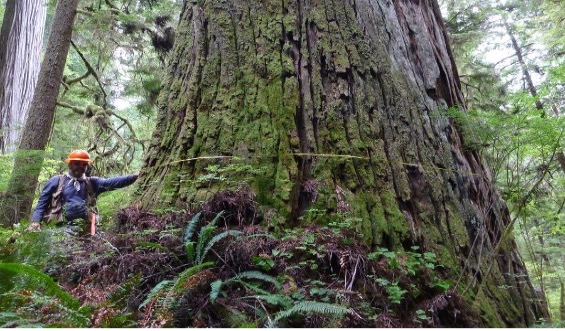
FIA plot sampling measuring diameter at breast height of a redwood in Del Norte County
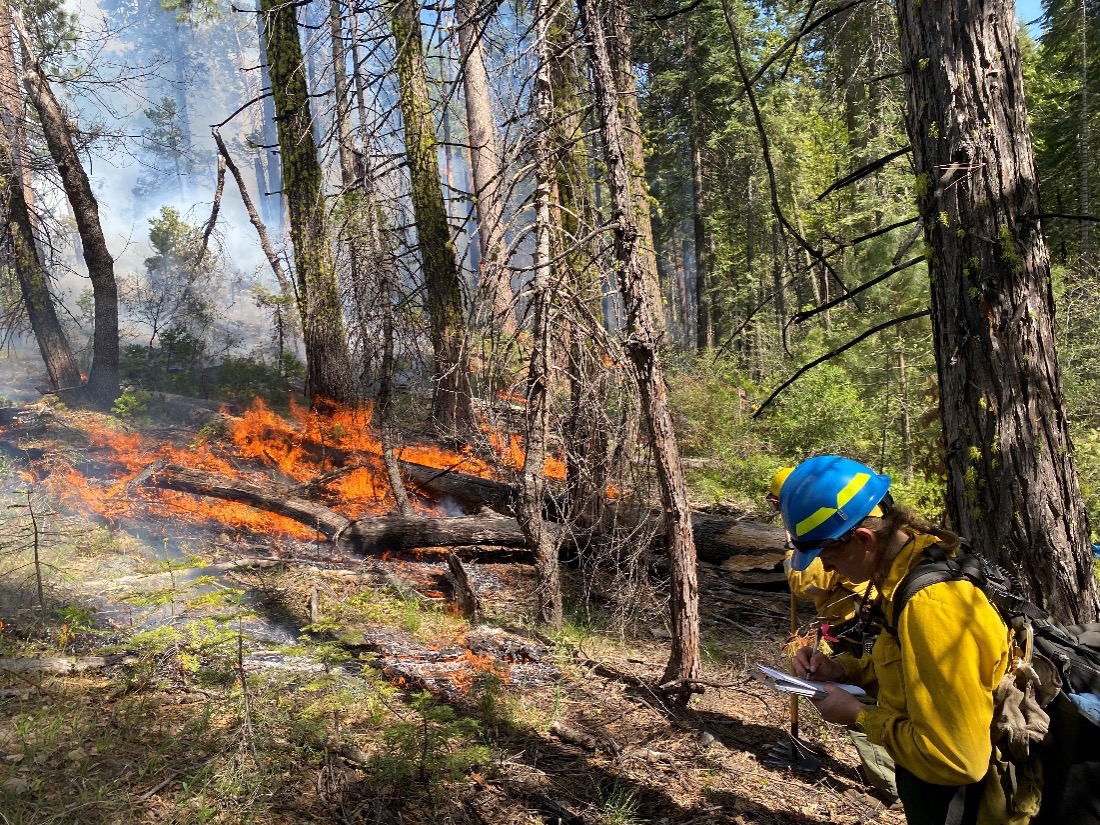
Prescribed fire monitoring Big Trees State Park
Funding for prescribed fire monitoring supports multiple and complementary university contracts (UC Davis, Chico State, San Jose State). This allows for increased capacity to conduct monitoring across a variety of vegetation types and provides an opportunity to support a broader diversity of students.
Wildfire resilience investments allowed the Forest Health Research Program to fund roughly a third of the competitive grant proposals submitted. The program received research proposals totaling $22 million in the last grant solicitation, including $1.5 million for three new projects on CAL FIRE Demonstration State Forests.
Resilience in Action: Examples of funded and ongoing monitoring and research studies include:
- Sierra Nevada Adaptive Management Experiment, funded by CAL FIRE, with new expanded project site in Jackson Demonstration State Forest starting in 2023
- “An open source platform for tracking carbon uptake and storage across California forests” – Dr. Troy Magney, University of California Davis
- “Forecasting the impacts of climate change, land use change, and management on wildfire risk and downstream impacts in Southern California’s montane forests and surrounding shrublands” Dr. Alexandra Syphard, Conservation Biology Institute
- “Understanding the costs and limits of vegetation management for wildfire mitigation in coastal California: a comprehensive ecological and economic study at the Soquel Demonstration State Forest” – Dr. Richard Cobb, Cal Poly San Luis Obispo
- Boggs Mountain Demonstration State Forest Post-fire Revegetation Study – Dave Sapsis, CAL FIRE (CAL FIRE video on YouTube)
- News coverage on the GigaFire Fuels Mapping Project, jointly funded by CAL FIRE and CARB
- Forest Health Research Program webinar: “Climate change and wildfires in western North American forests: a review of ecological departures and adaptation strategies” Dr. Susan Prichard and Dr. Keala Hagmann, University of Washington
RESOURCES
Residential Centers (Capital Outlay)
Residential Centers (Capital Outlay)
Department: California Conservation Corps
Program Description: To further expand forestry corps and fire crews the CCC is expanding and enhancing the Residential Program. With housing insecurities, lack of affordable housing, homelessness, and other social factors that can impact vulnerable youth, expanding residential program does not only promote Corpsmembers’ wellbeing, but also enhances the communities in which they serve. Most residential locations are in rural locations where population numbers couldn’t field 4-6 youth crews. Additionally, Corpsmembers experiencing new communities embodies the inclusive nature of the CCC. Residential locations also help with fire or other emergency response time as the Corpsmembers are available and ready throughout the entire day, seven days a week.
Program Impact: Opening of the new residential dorms and kitchen complex at the Placer Center located in Auburn, CA enabled 90 Corpsmembers to return to that community and complete very meaningful fuel reduction work. It has also provided a quicker response time for two Type I fire crews working out of the residential facility as they are there 24 hours a day.
This investment is launching capital development projects for building residential facilities for new fuel and fire crews at the CCC Auberry and Los Piños facilities.
Program Impact: Working closely with DGS plans and specifications for both the Los Piños and Auberry projects are being developed with anticipated completion of Preliminary Plans in June and April 2023, respectively.
Resilience in Action:
- Placer Center Tour Note the linked video highlights the completed construction and the Corpsmember experience as of Fall 2022.
- Los Piños Center Tour: The linked video highlights the facility and the project work.
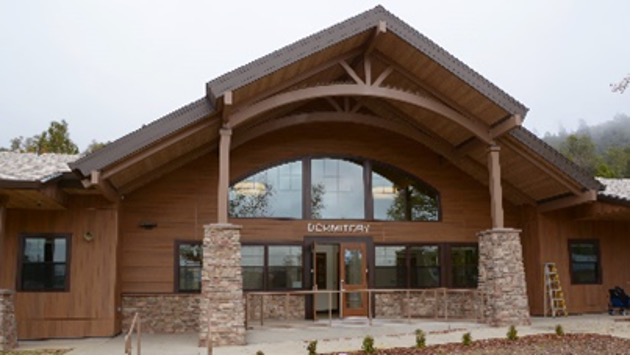
Completed Placer Center dormitory building.
Market Development
Market Development
Department: Office of Planning and Research
Program Description: Diverting forest residues for productive use can help increase the pace and scale of forest restoration efforts in California, reducing vulnerability to wildfire, supporting rural economic development, and promoting carbon storage. The Wildfire and Forest Resilience Action Plan identifies the development of, and access to, markets for these residues as a key barrier to conducting necessary treatment activities across priority landscapes in the state. The development of such a market for residues has been hampered by the lack of any centralized broker capable of entering into long-term feedstock supply contracts.
To address this challenge, OPR has funded five pilot projects to develop regional strategies to establish reliable access to forest biomass through a variety of feedstock aggregation mechanisms and organizational innovations. The pilots will develop plans to improve feedstock supply chain logistics within each target region through the deployment of a special district with the authority and resources to aggregate biomass and facilitate long-term feedstock contracts. Each pilot will assess market conditions, evaluate infrastructure needs, and work to enhance economic opportunities for biomass businesses in their project regions. The pilots are distributed across 17 counties in the Central Sierra, Lake Tahoe Basin, Northeast California, North Coast and Marin County.
Program Impact: In Fiscal Year 2021-2022, OPR was appropriated $3 million from the Wildfire and Forest Resilience Early Action Package (SB 85), to support the development of five feedstock aggregation pilot projects. In Fiscal Year 2022-2023, OPR was provided an additional appropriation of $2 million under AB 179, to enhance forest sector market development and to facilitate implementation of the pilot projects.
In 2022, OPR awarded $2.5 million to launch the pilots through five grants, each in the amount of $500,000 to Fall River RCD, Marin RCD, County of Humboldt, Placer County Water Agency, and Mariposa County RCD. An additional $350,000 was awarded to the University of California at Davis, Cal Poly Humboldt and Cal Poly San Luis Obispo to produce a digital marketplace, using remote sensing data and artificial intelligence, in an enhanced web application to coordinate biomass aggregation and to facilitate an online exchange between buyers and sellers of forest biomass within the OPR pilot project regions.
At present, OPR is in the process of updating project scopes and amending each grant agreement to provide additional funding to finance implementation of the pilots and to complete the construction of the web application.
Resilience in Action: Through the deployment of the pilots, OPR is supporting capacity building within local governments to improve landscape resilience to wildfire, increase forest biomass aggregation and enhance market development for wood products. The development of the OPR pilot program has sent a strong demand signal to the market not only in California but across the country and around the world. In response to these strategic planning activities, OPR has received strong interest from the biomass industry ranging from biofuels, bioenergy, biochar, CLT and mass timber producers. In anticipation of the OPR pilots and their project activities, a dozen or more biomass industry members have been actively coordinating with OPR, GO-Biz and I-Bank to evaluate project sites and secure funding for biomass facilities within the five OPR pilot project regions. These businesses have expressed strong interest in investment opportunities that otherwise would not be financially feasible without the feedstock aggregation activities under development within the OPR pilots. Based upon the interest expressed through biomass business inquires at GO-Biz, the project has sent a strong demand signal to the biomass industry that California is ramping up and creating an attractive economic environment to drive sustainable forest management and increase community fire resilience benefits.
RESOURCES
Climate Catalyst Fund
Climate Catalyst Fund
Department: IBank
Program Description: Businesses in the forestry sector face real challenges raising capital in the private lending market. Creating lower-interest loans removes a major market barrier and expands critical businesses in this sector from micro-mills to masticators to innovative wood and energy products. The Climate Catalyst Fund was established with early action funds in 2020-21 to help jumpstart private sector equipment using wood and woody material removed from forests for wildfire resilience.
Program Impact: Capital was provided in the fall of 2021, along with a crucial legislative change to enable IBank to receive the funds appropriated in 2020-21 and 2021-22. The program was then formally launched in January 2022 and is actively looking at transactions. IBank’s Catalyst Fund team is in advanced lending discussions with six project developers, each one of which is bringing significant private capital to the transaction alongside the state’s investment. Because of the presences of these outside investors, each project negotiation exhibits its own particular complexities – these deals take time, certainly more so than grant allocations do. In addition to Catalyst Fund activity, IBank is working alongside CAL FIRE to support the agency’s financing of projects in the biomass utilization sector, and is leveraging its small business loan guarantee program to encourage community-scale lenders to invest in this sector. IBank continues to support market growth by utilizing other state and federal funding mechanisms where individual transactions allow, and by connecting businesses, NGOs, and public entities in this sector to IBANK’s broader network of financing resources.
Resilience in Action: With the combination of appropriated funding and legislative authorization for IBank to receive and deploy capital, IBank leadership was able to seek and ultimately receive IBank Board approval to launch the program in January 2022. In 2022, , IBank received more than 40 expressions of interest in receiving loans or guarantees from the Climate Catalyst Fund. The IBank staff is currently reviewing expressions of interest, working with entities across the state to support the advancement of projects, and engaging third-party capital partners to further leverage state dollars.

